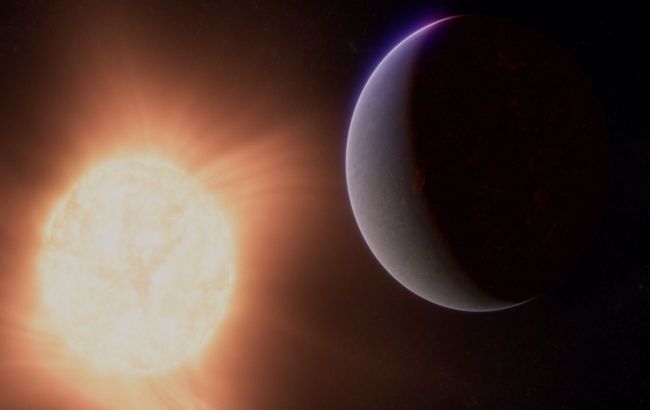Astronomers for first time discover reliable atmosphere on 'super-Earth'
 James Webb first discovered a dense atmosphere on a rocky "super-Earth" (illustrative photo: Astrobiology Web)
James Webb first discovered a dense atmosphere on a rocky "super-Earth" (illustrative photo: Astrobiology Web)
The discoveries made by the James Webb Space Telescope will impact our understanding of planet formation processes. It will also provide impetus for the development of methods to analyze the gas composition of exoplanet atmospheres, including those that may be conducive to life, according to the Astrobiology Web website, which studies the origin, evolution, and future of life in the Universe.
What is known about the 'super-Earth'
This 'super-Earth' is located in a system approximately 41 light-years away from us and is of interest in its own right. It consists of a pair of small stars, among which the brightest is 55 Cancri A, around which the planet orbits. In total, five planets have been detected in this system.
The exoplanet 55 Cancri e was first discovered in 2004 and has been actively studied since then. Astronomers have determined that its mass exceeds that of Earth by 8.8 times, and its radius is 1.95 times larger.
Of particular importance is the fact that it is very close to its star and completes one orbit in just 18 hours, leading to significant heating of the planet. The temperature on the daytime side reaches 2,300 degrees Celsius, while on the nighttime side, it reaches 1,350 degrees.

The data shows that the daytime temperature of the planet is approximately 2,300 degrees Celsius (Photo: Astrobiology Web)
How the discovery was made
As expected, such high temperatures should preclude the existence of a typical atmosphere due to its evaporation under the star's influence. Nonetheless, in 2016, astronomers detected traces of hydrogen and helium in the planet's surrounding space, suggesting that it might still have been able to retain a gaseous envelope.
Now, a group of scientists led by planetary scientists from the California Institute of Technology have analyzed the state of 55 Cancri e using the James Webb Telescope. They examined the spectrum of light emitted by the planet-hosting star as the planet transited behind and in front of it.
By comparing differences in infrared radiation with models of various gases, they concluded that the likelihood of a hydrogen and helium primary atmosphere was low. Instead, they found evidence of a dense, variable atmosphere composed of various carbon oxides, as well as indications of water, sulfur dioxide, and phosphine.
Conclusions
The researchers of the study believe that these gases were not part of the planet's original atmosphere and are likely being expelled from its depths due to volcanism and other processes. They also note the similarity of this process to the formation of the atmosphere of Jupiter's moon Io.
Despite its density, such an atmosphere proves to be unstable and quickly dissipates, but it is likely replenished by active processes within the planet. This research is important for a better understanding of the diversity of exoplanets in our galaxy.
Earlier, we reported the discovery of the first "super-Earth" with a perpetual day on one side.
Additionally, we have material on scientists estimating the number of planets in the Milky Way where life could exist.

